Last week we spoke about the importance of following a structured and progressive periodised training program in order to ensure our training load is appropriate for adaptation to occur rather than to experience excessive fatigue and injury. This week we are discussing the physiological and nutritional recovery practices we can use in order to reduce the time required in between sessions and get back to full freshness quicker.
Physiologically, we can undertake active or passive recovery. Active recovery involves the voluntary movements of muscles, while passive recovery involves no voluntary muscle activity.
A summary of the reported benefits of different recovery methods
Active Recovery
Protocol: Involves exercising at a light intensity (<56% VO₂ max) for 5+ minutes and may include dynamic stretching such as leg swings. Can be undertaken on land (walk/light jog, easy cycling etc) or in the pool (deep water running etc)
Useful for: All athletes whose training efforts last 30 seconds or more.
Benefits: Clears lactic acid out of the muscle 2x quicker than if no recovery is undertaken, which is very important with 2-a-day sessions or if we have another session/competition early the next day.
Source: Bangsbo, 2003; Fitness Training in Football, p.125
Complete Rest
Protocol: Sit down and do nothing in-between efforts/sessions.
Useful for: Sprint athletes in between efforts lasting less than 30 seconds.
Benefits: Resynthesizes phosphocreatine (used primarily in sprint events) quickly.
Cons: Lactic acid remains in the blood stream for a significant amount of time.
Ice Baths
Protocol: 15-20 minutes immersed in 10-15°C water.
Useful for: Reducing muscle inflammation from heavy training or contact sports.
Benefits: Causes vasoconstriction of muscles which draws blood and inflammation away from damaged tissues. May reduce delayed-onset muscle soreness (DOMS) and perceptions of fatigue. Quicker restoration of resting metabolic rate.
Contrast Water Immersion
Protocol: 4x30 second plunges in 10-15°C water spaced with 3-4 minutes recovery in a warm pool (38-42°C).
Useful for: Clearing lactic acid from the muscles caused by hard endurance sessions or repeat sprint sports.
Benefits: causes a'muscle pump' effect through repeated vasoconstriction and vasodilation. Contrast water therapy allows veins to fill with blood through vasodilation in a warm pool, and then literally squeezes it up towards the heart through vasoconstriction in cold water. This therapy mimics the effects of an active recovery and forces blood to circulate rather than pool in the muscles. This allows us to oxidise and clear lactic acid.
Massage
Useful for: All athletes, particularly those who may be mentally fatigued.
Benefits: Decreased perception of fatigue. Claimed to reduce muscle stiffness (however little supporting scientific evidence of this).
Compression Garments
Protocol: wearing 'skins' or other compression garments after activity for the purpose of recovering quicker.
Useful for: Anyone who feels personal benefit from them.
Benefits: Scientifically, not a lot. Claimed to restore us to a resting metabolic rate quicker and claimed to reduce muscle soreness and inflammation. Little supporting scientific evidence on wearing compression garments for recovery.
Sleep/Relaxation
Protocol: Get your 8+ hours every night! Take time out to relax.
Useful for: Everyone.
Benefits: Restores us to a resting metabolic state quicker, a reduction in perceptions of fatigue/stress, boosted immunity... Sleep is king.
Passive Stretching
Protocol: stretching a muscle and holding it in a static position for 20-30 seconds.
Useful for: Anyone who feels better afterwards.
Benefits: Scientifically, not a lot of evidence of benefit in recovery. Some individuals have a decreased perception of fatigue but the literature hasn't proven much.
Post-event nutrition
Post event nutrition is vital in replenishing your glycogen stores and repairing muscle damage. Our bodies have a 15 minute window in which our muscles have heightened insulin sensitivity, meaning our muscles are literally searching for nutrients to absorb.
Protocol: Consume 1-1.2g of simple carbs/kg of body weight and 20-30g of protein within 15 minutes of completing activity. Simple carbs include sports drink, gels, jam sandwiches: anything high sugar and easily absorbed by the muscles. Aim to eat a proper meal within 2 hours of completing the session.
Useful for: Athletes completing long (3+ hour) sessions.
Benefits: Muscle and liver glycogen stores are replenished up to 3x quicker than if eating is delayed by 2 or more hours. This is beneficial to 2-a-day trainers, those who have a long evening session and hard session the next morning, and for multi-day events.
Consuming carbohydrate immediately after exercise will replenish your glycogen stores more quickly than if eating is delayed. Source: Journal of Applied Physiology.
Summary
There is still a lot to learn about the science behind recovery. It is such a difficult variable to measure as individual responses to exercise vary so greatly that there is a huge number of confounding variables in most recovery research projects. The most important thing is to figure out what works best for you to accelerate your recovery. We know for certain that adequate sleep, active recovery and contrast water immersion assist in clearing out fatiguing lactic acid, returning us to a resting metabolic state, and reducing our perceptions of fatigue, so endurance athletes should focus on this as a minimum. We also know that we have a 15 minute window in which to take advantage of increased insulin sensitivity post-exercise, so we should be consuming food immediately after longer sessions. If you find benefit from wearing compression garments, getting a massage, stretching or having an ice bath, then great; continue this. Just because there isn't definitive evidence yet, doesn't mean it isn't beneficial.
Feel free to follow us on our socials:
Facebook: METS Performance Consulting
Instagram: @metsperformance
Twitter: @METSperfconsult
Written by Luke McIlroy – Director of Sport Science at METS Performance Consulting
BEx&SpSci, ESSAM, AES












